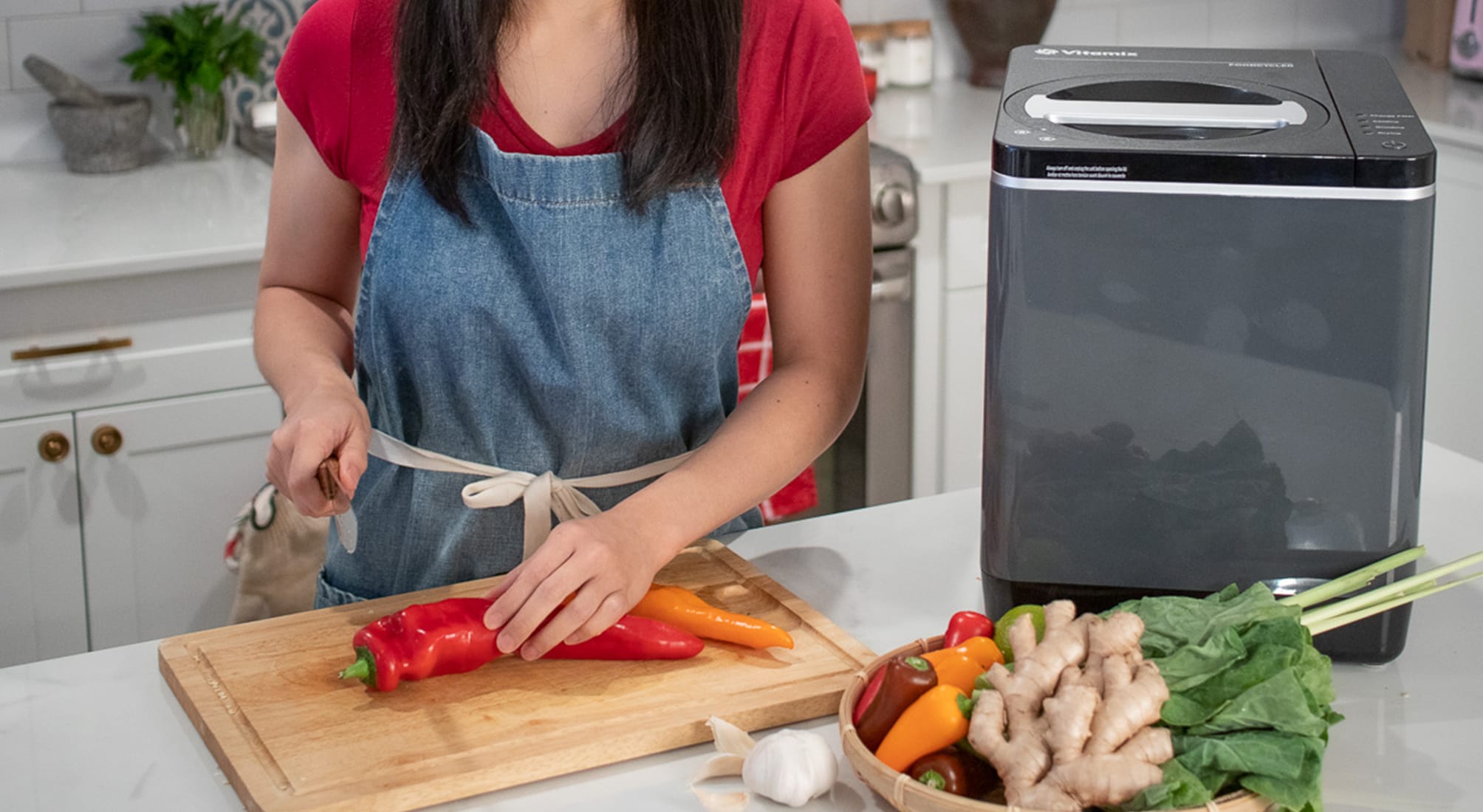As someone who is constantly developing recipes, choosing the best-quality ingredients is a key aspect of my work. Not only does it make for better-tasting food, fresh produce lasts longer in my home and results in less food waste.
Generating some amount of waste is unavoidable, so for the peels, cores, roots, and stems that you can’t use, the Vitamix FoodCycler FC-50 is a great solution for reducing the volume of your food scraps by 90% with just the touch of a button.
Here are some tips for choosing the best produce that I buy regularly for Thai cooking:
- Shallots, onions, and gralic. Make sure they have not sprouted. Give them a good squeeze and they should be very firm. Always check for mold which looks like black dust on onions and shallots and green dust on the root ends of garlic bulbs.
- Limes. For the juiciest limes, look for smooth, shiny skin and it should give a bit when squeezed. Firm limes with pronounced dimples are a sign of thick skin and less juice. Make sure there are no brown patches which develop as limes get old.
- Lemongrass. I suggest buying lemongrass from busy supermarkets where they will likely have a higher turnover. Squeeze the bottom of the stalk to make sure it’s very firm, and always check for mold around the root end.
- Chili Peppers. Don’t just look at the freshness of the fruit, the green stems attached should also not be wilted or dried out. If you’re buying small, spicy chilies that need to be finely chopped, wash and freeze them immediately as it will make no difference in the dish. Chop them while still frozen.
Here are some bonus tips for choosing the best quality Thai dry staples.
- Coconut Milk. Look for coconut milk in paper cartons if possible. These are UHT pasteurized and have a better flavour than canned. If this isn’t available, choose a brand with the fewest ingredients. Do not buy “light” coconut milk as it is much less flavourful.
- Soy Sauce. Buy soy sauce from an Asian grocery store where there will be many more options. Generally, the higher the price, the better the quality. If possible, choose soy sauce that matches the cuisine you’re cooking for the most authentic flavour, i.e. use Japanese soy sauce for Japanese food.
- Fish Sauce. The fewer the ingredients the better, and look for one with higher protein content (this means more fish was used).
Related Articles

Vegetables and Herbs: How to Buy, Prepare, Store and Cook
Here are a few quick tips on how to buy, prepare, store and cook with fresh vegetables and herbs.

How to Grill or Roast Vegetables
Tips for perfectly grilled and roasted vegetables with delicious marinade recipes.

Why You Should Embrace Brown Fruit and Vegetables
Brown fruit and vegetables are often thrown away, which contributes to a high amount of global food waste. Here's how you can use them in the kitchen.



